Many rugose horn corals occur local to the Pennsylvanian rocks of Armstrong County, Pennsylvania. Stereostylus is a common solitary horn coral in Pennsylvania. The subclass Rugosa Milne Edwards & Haime 1850 went extinct at the end of the Permian during the most significant known mass extinction.
The specimens below show perhaps the same species. The top piece of polished limestone is a cut cross-section. The bottom part is an eroded end sticking out of stone. The shell material eroded past the matrix, showing an interesting pattern.
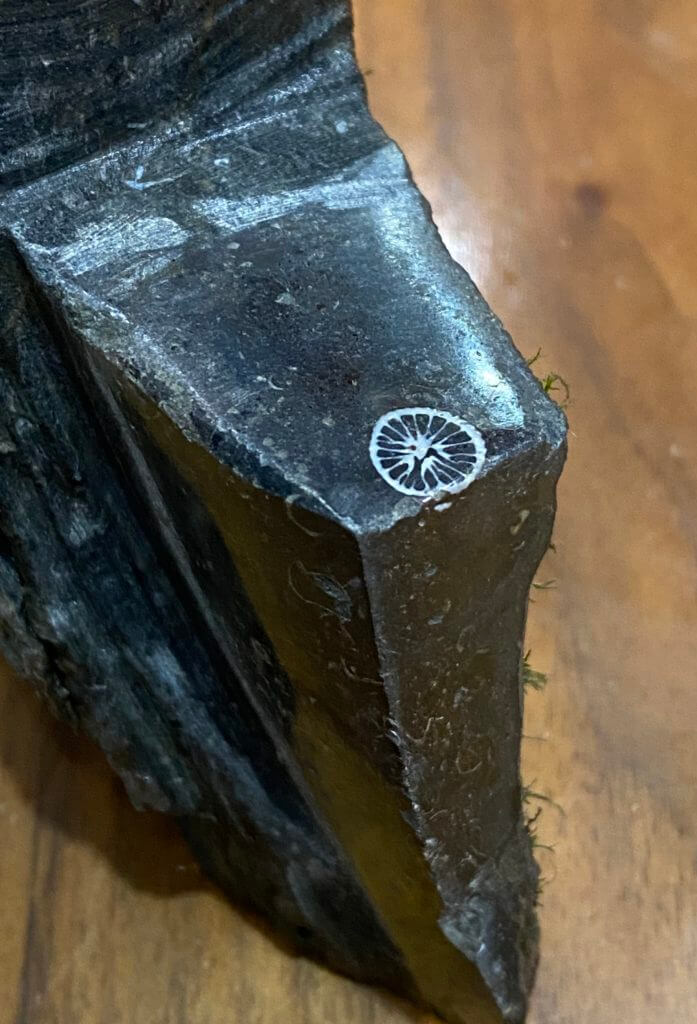
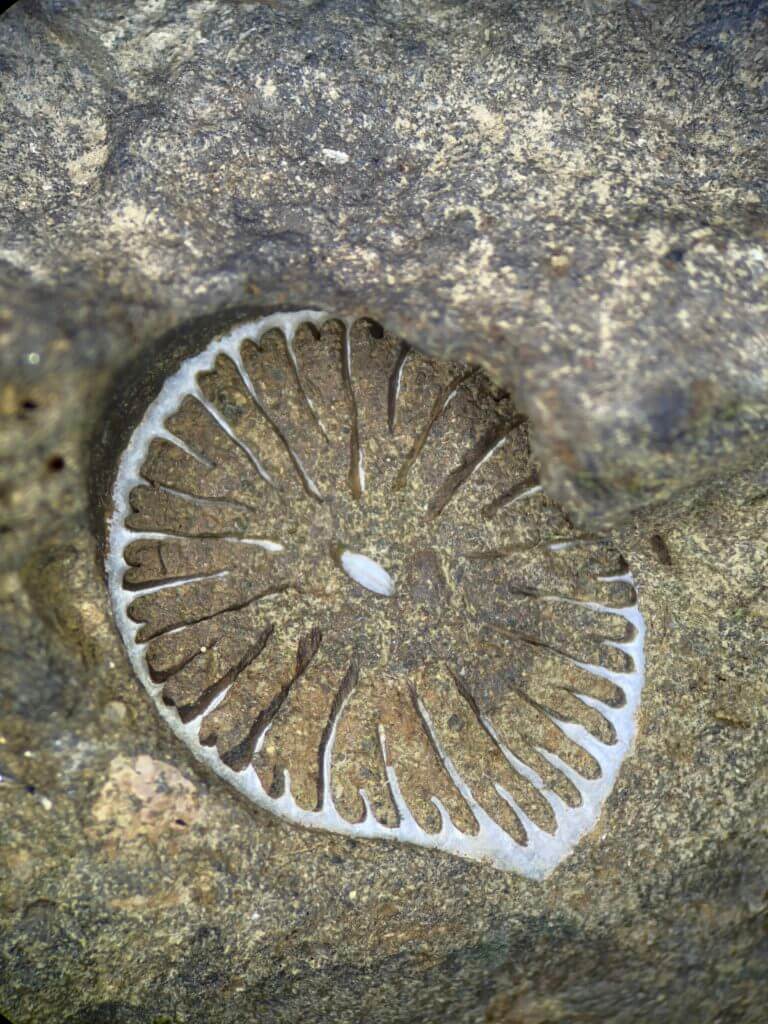
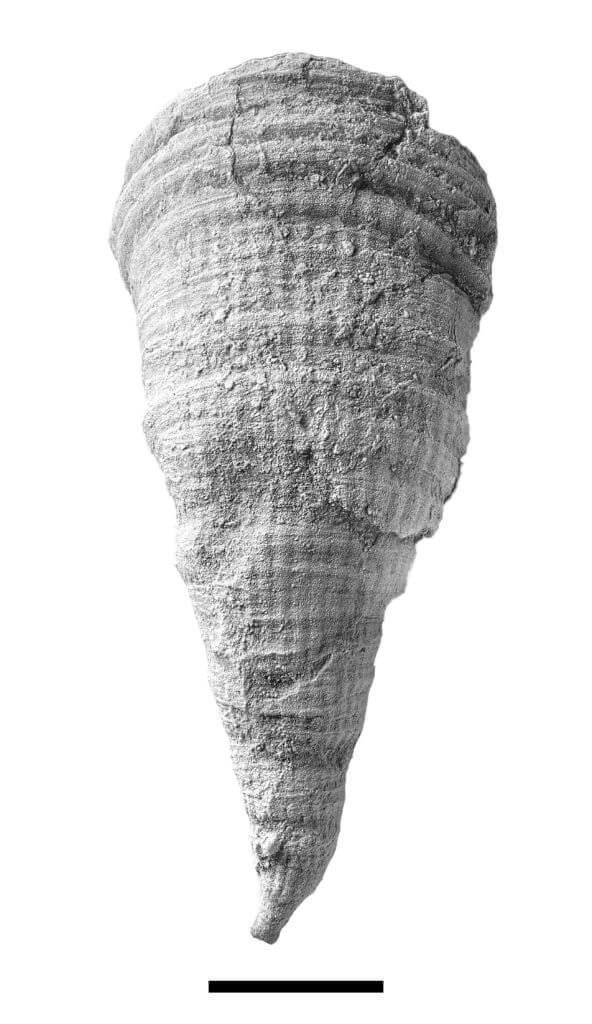
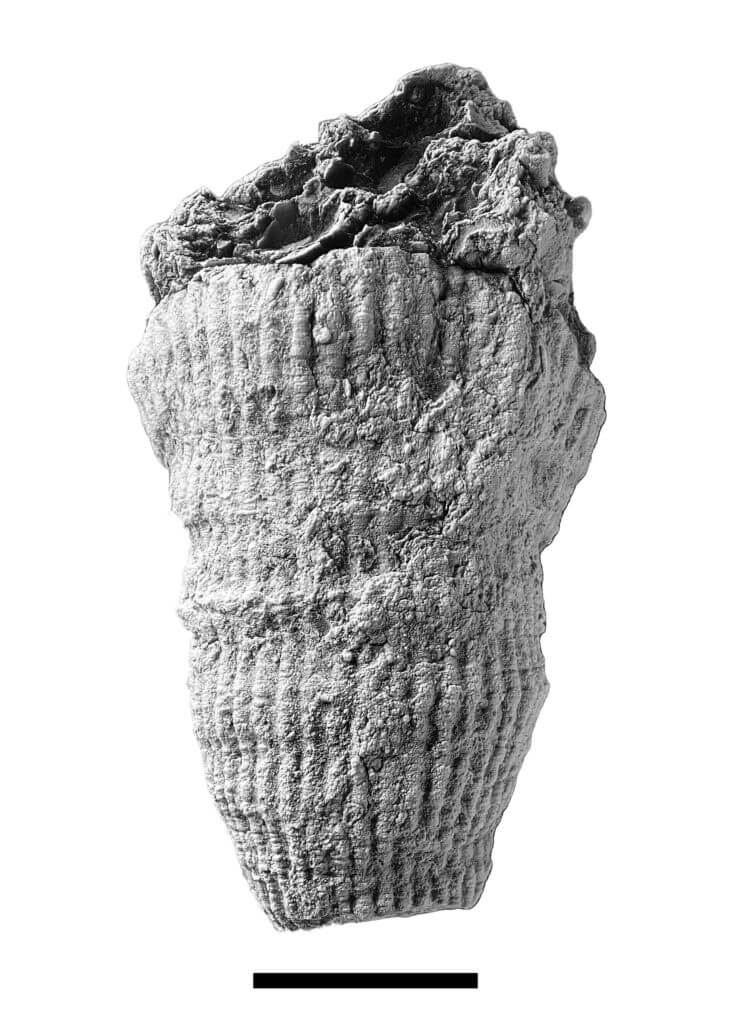
Pennsylvanian corals that are not Horn Corals
The majority of corals recovered are solitary horn corals. These have a horn shape and can be referred to as rugose corals due to their wavy shape. Yet, solitary corals were not the only ones around. Corals that formed colonies existed but were harder to find. The fossil below is Michelinia sp.
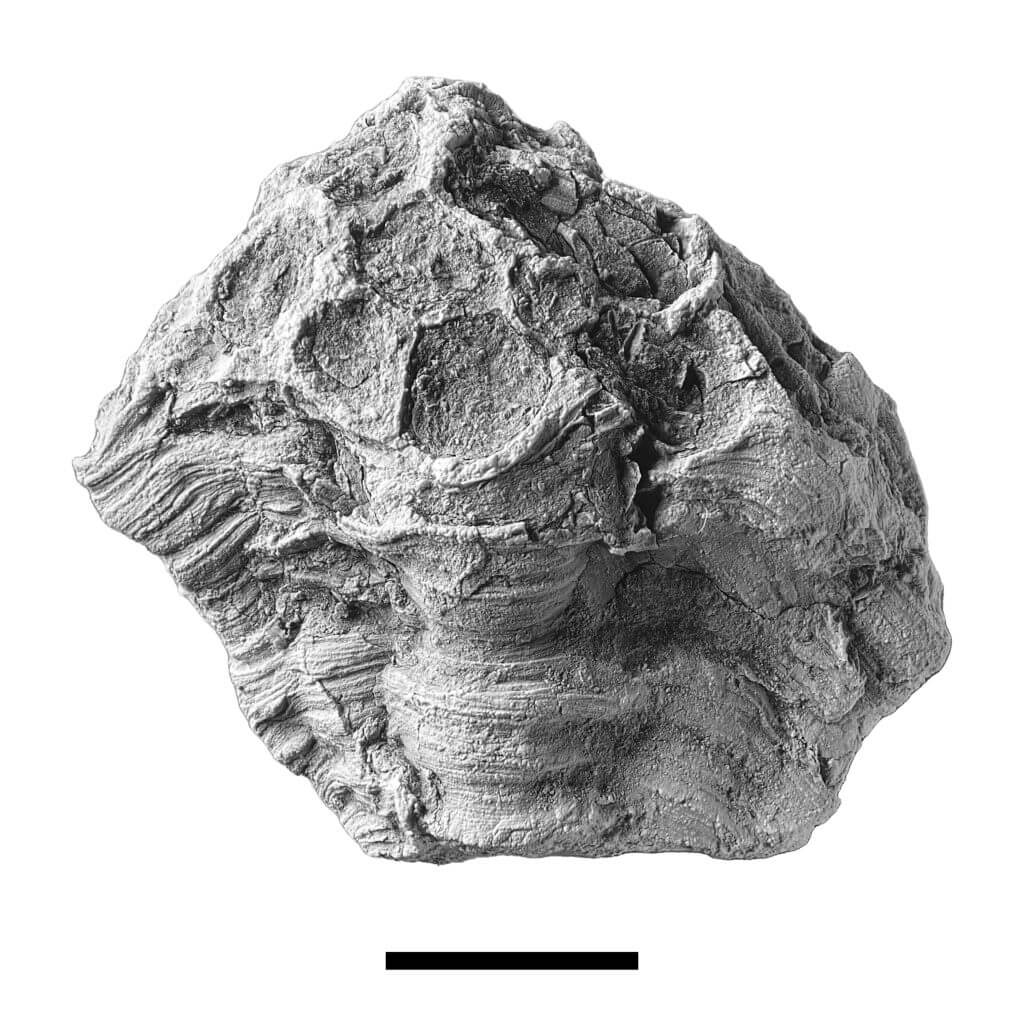
Further Reading on Horn Corals
- Digital Atlas of Ancient Life – Article
- fossilworks – Stereostylus
- Rugose corals – Horn shapes – the University of Kentucky Geological Survey
- 1.2 Rugose corals (Rugosa)—The Digital Atlas of Ancient Life
- Solitary Rugose Coral | Ohio Department of Natural Resources
Further Reading about Michelinia
- Michelinia sp.—St. Louis Pennsylvanian Fossils of the Altamont Formation

